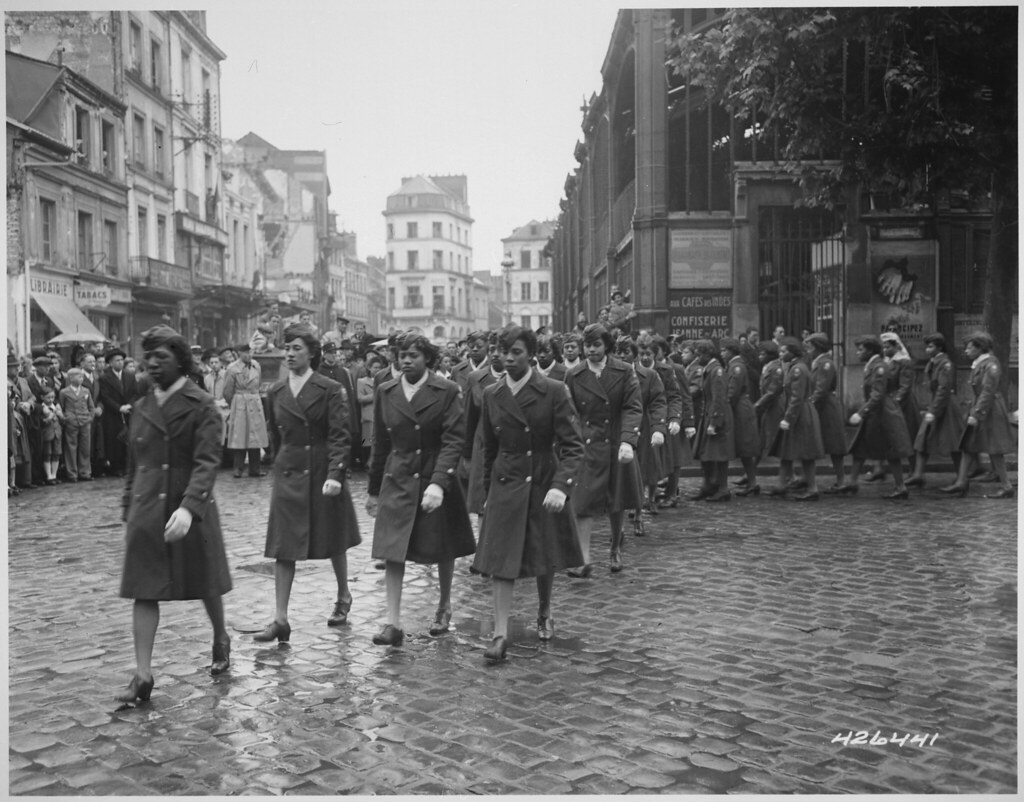Director Tyler Perry delivered the movie “The Six Triple Eight” to Netflix in 2024, which movie won five awards in the recent NAACP 2024 Image Awards.
The movie is based on the true story of the 6888th Central Postal Directory Battalion, nicknamed the “Six Triple Eight.” The recognition of the 6888th Battalion is a moment to celebrate, but it only scratches the surface of their experiences. To truly understand their impact during World War II, we must look beyond the headlines and examine the historical realities they faced.
In 1942, the Women’s Army Corps (WAC) was created, but didn’t have real military status until 1943. According to the Wounded Warrior Project, the WAC was converted from the Women’s Army Auxiliary Corps (WAAC), Black women being accepted as enlisted WAC personnel was possible thanks to the efforts of Dr. Mary McLeod Bethune and the support of First Lady Eleanor Roosevelt. In the early forming of the WAC, the Army wanted women capable of performing non-combat roles and after a long search, they found the perfect person for the job.
Charity Edna Adams was born in Kittrell, North Carolina. She applied for entry into WAAC, and the Army accepted her in the spring of 1942. Charity rose in the ranks to become the highest-ranking Black female lieutenant colonel officer during World War II.
In December 1944, Major Charity deployed to Europe, leading the first Black WAC unit to serve overseas. The unit, the 6888th Central Postal Directory Battalion, also known as the Six Triple Eight, an all-Black female battalion that stayed in service from 1945 to 1946. According to the U.S. Army Center of Military History, 824 enlisted personnel and 31 officers were a part of this battalion. The Six Triple Eight only had one assignment: sorting and sending mail for millions of American service members and their families.
The Battalion was assigned to get the task done in six months. The women of the battalion vowed to get it done with the motto, “No Mail, Low Morale,” in mind. By dividing their work into shifts that ran all week, the women processed an average of 65,000 pieces of mail per shift.
During their service, the battalion worked, despite many hardships. According to the U.S. Army Women’s Foundation’s Hall of Fame, three soldiers were even killed in the line of duty on July 8, 1945, in a vehicle accident.
However the battalion’s hard work paid off as they managed to finish their task in just three months as opposed to the six months given to finish the task. The Wounded Warrior Project states, “The last members of the 6888th arrived back in the States in February 1946 to no fanfare. No job well done. No thank you for your service. The group’s lone recognition was Major Charity Adams’ well-deserved rise to lieutenant colonel. According to the National Museum of the US Army, Major Charity Adams even wrote a book that was published in 1989 called “One Woman’s Army,” speaking about her life and experiences before passing away in 2002.
In 2021, the Six Triple Eight received the Congressional Gold Medal. In 2022, another surviving Six Triple Eight hero, Cresencia Garcia, was discovered in New York. Oprah Daily and CBS News featured stories on her long-kept secret, the Six Triple Eight. Many former soldiers of the Six Triple Eight spoke up about their service after the Oprah Daily coverage, and now, with the creation of The Six Triple Eight movie, their story has been pushed further into the public eye.
The movie — which focuses on the main character Lena Derriecott Bell King, played by American actress Ebony Obsidian, and Major Charity E. Adams, played by Kerry Washington, shows the history of The Six Triple Eight from the perspective of the soldier and the commander.
The movie sheds light on history that many didn’t know about until the movie was released. The movie even shows footage of the real Lena Derriecott Bell King sharing her story. Lena previously met with all of the cast before her passing to thank them for sharing the story of the Six Triple Eight. The battalion impacted millions of families and demonstrated the capabilities of Black women in the military during a time when they were not welcomed, paving the way for greater inclusion and opportunity.






